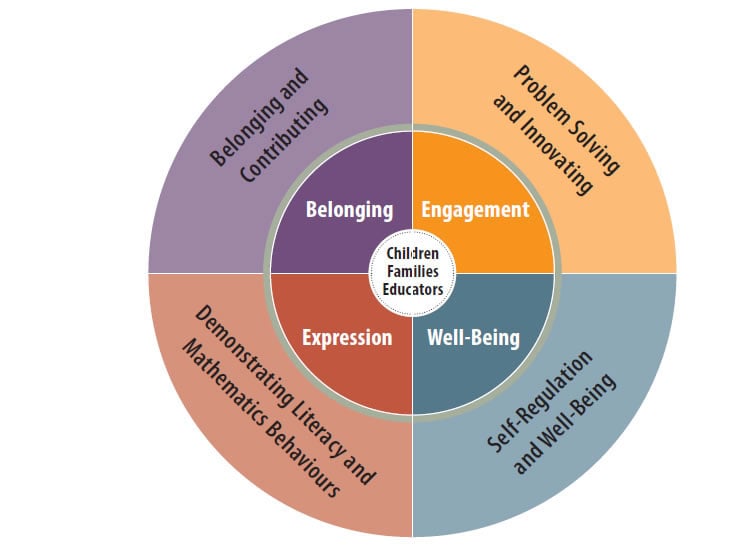The Kindergarten Program

The Upper Grand District School Board provides programming as outlined in the Ontario Kindergarten Program Document. As of September 2016, all kindergarten programs in the province of Ontario are expected to reflect the expectations and teaching practices outlined in this document.
This research-based program provides a framework for the learning environment, teaching practices, and learning expectations that support young children’s well-being and learning across four frames: belonging and contributing, self-regulation and well-being, literacy and mathematics behaviours, and problem solving and innovating. These four frames are also aligned with the four foundations of early learning used in Ontario childcare centres: belonging, engagement, expression and well-being.
The program outlined in the 2016 Kindergarten Program Document is a child-centred, developmentally appropriate, integrated program of learning for four- and five-year-old children. The purpose of the program is to establish a strong foundation for learning in the early years, and to do so in a safe and caring, play-based environment that promotes the physical, social, emotional and cognitive development of all children (Kindergarten Program Document 2016, p. 9).
The primary goals of the Kindergarten program are:
To establish a strong foundation for learning in the early years
To help children make a smooth transition from home, child care, or preschool settings to school settings
To allow children to reap the many proven benefits of learning through relationships, and through play and inquiry
To set children on a path of lifelong learning and nurture competencies that they will need to thrive in the world of today and tomorrow
For more information on programming please see the following resources:
The Kindergarten Communication of Learning
Beginning in 2016-17, parents of kindergarten students will receive the new Kindergarten “Communication of Learning,” which replaces the kindergarten report card used in the past. The “Communication of Learning” gives parents information on their child’s key significant learning, growth in learning and next steps within the four frames mentioned above. This format is different from the report cards that parents may be familiar with.
For more information on the Kindergarten Communication of Learning, follow this link to the Growing Success Kindergarten Addendum
How will my child learn and who will teach my child?
Kindergarten classrooms usually have two educators, a Teacher and an Early Childhood Educator (ECE), who work as a team. Kindergarten is a two year program, with Junior and Senior kindergarten children in the same class. Programs are focused on ‘learning through play’, which means that children are given large periods of time to play, explore and discover. The Teacher and the ECE provide intentional materials and opportunities to further the learning and talk with children as they are exploring and discovering. In most classrooms children will spend time learning in the outdoors every day.
Children start school with different strengths and needs. Programming in kindergarten is based on the needs and interests of children, and can meet the needs of a variety of learners. Kindergarten teams plan instruction for the whole class, small groups, and individual children. Children work towards program expectations at their own pace and with support. Educators also work with community agencies to support children with special education needs.
The classroom may include:
Space for all children to move freely
A quiet space
Soft lighting and natural colours to calm the space
Materials and toys that support thinking and learning
Natural items that are brought in from the outdoors
Art and painting supplies
